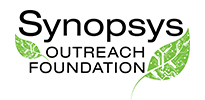How to Write an Abstract
With thanks to Phil Koopman, Carnegie Mellon University
Checklist: Parts of an Abstract
Despite the fact that an abstract is quite brief, it must do almost as much work as your talk, project display board, and notebook. This means that it should include the sections that follow. Each section is typically a single sentence, although there is room for creativity. In particular, the parts may be merged or spread among a set of sentences. Use the following as a checklist for your next abstract:
Motivation:
Why do we care about the problem and the results? This section should include the importance of your work, the difficulty of the area, and the impact it might have if successful.
Problem statement:
What problem are you trying to solve? What is the scope of your work (a generalized approach, or for a specific situation)? Be careful not to use too much jargon. In some cases it is appropriate to put the problem statement before the motivation, but usually this only works if most readers already understand why the problem is important.
Approach:
How did you go about solving or making progress on the problem? Did you use simulation, or analysis of field data? What was the extent of your work? What important variables did you control, ignore, or measure? Do not copy your procedure.
Results:
What’s the answer? Put the result in numbers if possible (% is good.) Avoid vague results such as “very,” “small,” or “significant.”
Conclusions:
What are the implications of your answer? Is it going to change the world (unlikely), be a significant “win,” find something interesting, or simply indicate that this path is a waste of time. (All of the previous results are useful). Are your results general, or specific to a particular case? What did you learn?
Other Considerations
- Use the Project Abstract form (interactive PDF or Word document).
- An abstract must be a fully self-contained, capsule description of the project.
- It must make sense all by itself.
- It should be 250 words or less. This follows the 2021 ISEF guideline.
- It should use complete sentences in prose format. Treat the abstract as a “how I would tell a friend about my work, from start to finish” letter.
Further Information
How to Write an Abstract (Regeneron ISEF)

